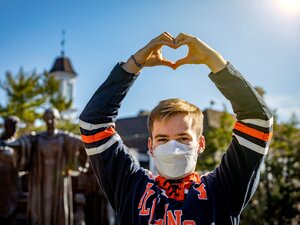By Katie Southon SCS Advising Leader:
The heart, a classic symbol of Valentine’s Day. It’s impossible to look around during February and not see colorful pink and red hearts decorating every available surface, which got me thinking: how does this relate to chemical engineering? Chemical engineering can relate to almost every aspect of our everyday lives, and hearts are no exception.
The heart is a muscle that pumps blood through the body using contractions that force the blood through the circulatory system. Just like how chemical engineers can calculate the pressure of fluids flowing within a pipe, it’s possible to calculate the blood pressure of a patient to see how hard the heart must work in order to achieve optimal circulation.
If circulation isn’t optimal or the heart isn’t a strong enough pump on its own, patients may receive a pacemaker. Guess what? Pacemakers can be explained with chemical engineering too! Pacemakers provide an electrical current to the heart in order to regulate its beating. The heart transfers that electric current to mechanical energy that contracts the heart, allowing the blood to flow at regular intervals as the mechanical energy is converted to kinetic energy.
I’m not going to get into actual calculations in this post, but you can learn more about the estimations engineers make and the methods to solve these problems in the following chemical engineering courses, among others: CHBE 221, Principles of CHE; CHBE 421, Momentum and Heat Transfer; and CHBE 476, Biotransport. If applying chemical engineering to biological systems interests you, I also recommend looking into research being done by faculty in the School of Chemical Sciences and with the interdisciplinary Beckman Institute here at the University of Illinois- both have ongoing research relating to biological systems that undergraduates are able to get involved with as early as their freshman year.
I hope you had a Happy Valentine’s Day!
